This step-by-step guide will teach you how to set up uTorrent proxy quickly and easily.
After experimenting with torrenting platforms for years, we know a thing or two about the best way to install uTorrent proxy.
So without further ado, here’s what you have to do:
Table of Contents
Step 1: Launch uTorrent
If you already have uTorrent installed on your system, you need to double-click on the app’s icon to launch it. (If you can’t find it, click here to find out where to look.)
Then, click the tab labeled Options in the top-left corner of the app’s main screen. 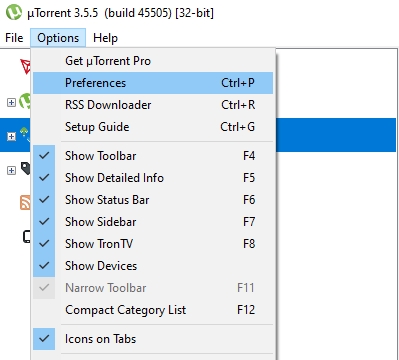
Step 2: Select SOCKS5 Proxy
Now you need to select your type of proxy for uTorrent. Choose SOCKS5 and then input your server addresses. 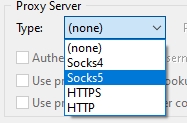
Once you’ve launched the server picker, click on the option that says Show Advanced Options. When that’s done, click Select Server Type. After that, click on P2P.
Next, click Select Security Protocol and select either HTTP Proxy or SOCKS5 in order to get to the recommended proxy server.
Step 3: Check the Port Type
After choosing the best proxy server, you need to go back to uTorrent’s main app screen—if you didn’t miss anything, you should be at the Connection tab mentioned in Step 1 above.
From there, type 1080 in the Port Type since you’re using the SOCKS5 proxy. If you wanted to use HTTP, then you would have typed 80.
When that’s done, you should disable and enable the following options:
- Disable Connections unsupported by the proxy.
- Disable features that leak identifying information.
- Disable all local DNS lookups.
- After that, check Use proxy for P2P connections and Use proxy for hostname lookups. Be sure to check-mark the Authentication option as well.
Step 4: Input Login Details (Username and Password)
In this step, you’ll have to provide the username and password that you use with your VPN subscription.
If you’re subscribed to NordVPN, then you’ll enter your NordVPN credentials in the Password and Username fields beside the Authentication option. Then click OK.
Step 5: Check to Make Sure It’s Working
If you have followed the above steps in the right order, you’ve successfully set up uTorrent proxy. To check if it’s working, follow these actions:
First, go to ipleak.net and scroll to the section that says Torrent Address Detection. You may have to click an Activate button as well.
You should see text that says: “this Magnet Link.” Click this option to add it to uTorrent.
The site will also tell you that you need to wait for a bit to allow for results. Once ipleak has done all the processing, it should open up a new window for you. Select uTorrent as your preferred program and then hit OK.
Note:
During this process, do not close ipleak.net while you’re selecting the program from the Launch Application pop-up.Once you select the application, uTorrent should open up on its own. Once that’s done, ipleak (via the Magnet Tracking Link) will start synchronizing.
While uTorrent is working on the file (by forming a connection with peers), you should go back to ipleak. Now, you should see a different IP address from before, and this should be the one that you had your proxy choose for you.
Assuming you used NordVPN as your VPN service provider, then you should see the IP address of the VPN server you connected to. If you do see that IP address, then that means your proxy is working and uTorrent can only download files from that new IP, hence securing your downloads in addition to hiding your identity.
Why Should You Sign up for a VPN Even If You Need a uTorrent Proxy
Most good VPN service providers offer free proxy services with their subscription packages. NordVPN, for instance, offers users a full proxy service for free with each VPN package.
There are a ton of tutorials about how to set up different types of proxy services for different platforms as well.
Perhaps we should mention here that when it comes to using a VPN vs a proxy, a VPN service always wins out.
VPN services are more secure, more thorough, more stable and faster in most cases.
Some people argue that a proxy service is bound to be faster than VPN services because, unlike VPN services, proxy services don’t deal with encrypting the user’s data or establishing a secure tunnel for the transfer of data. And while that’s true in most of the cases, VPN services are better if your internet service provider is throttling your connection or the proxy servers are overloaded with other users.
In any case, rather than trying to sign up for only a proxy service, you should spend some time thinking about getting a VPN service so that you can get two services for the price of one. Either way, we would advise against getting a free proxy service.
Should You Use a VPN or a Proxy for Torrenting?
To answer this question is not as straightforward as it may seem. Many users prefer to use each depending upon the situation at hand. But for the task of torrenting privately, the vast majority of users prefer VPN services.
Another key factor to using VPNs for torrenting is encryption. VPN services provide encryption while proxy services don’t. With that said, almost all good torrent clients come with a built-in encryption feature.
This torrent client-enabled encryption feature is not exactly strong encryption. In terms of strength, torrent clients offer encryption that the community considers as lightweight. Moreover, for the torrent client encryption to work, peers on the same network must also enable encryption.
In other words, you cannot rely on torrent client encryption to protect your data because you can’t be certain that the peers in your group have enabled the option as well.
Now, if you don’t want to risk your privacy and security, and do want to thwart any attempts on part of your internet service provider to spy on your torrent traffic, then you need to use a dedicated VPN instead of the encryption provided in your torrent client.
You also have to keep in mind almost always, any entity that wants to track your torrenting habits will do so by recording your IP address and then moving forward from there.
This IP address is something that you need to hide. Proxy services take on that task very well. In fact, they may out-do VPN services in a couple of somewhat important areas.
For example, since online proxy services do not offer any encryption, they can retain your normal internet connection. VPN services, especially ones that are not considered top-tier, tend to slow down your internet connection.
Encryption offers great security benefits, but it does so at a cost.
To go through the process of encryption, a VPN has to run the user’s data through an algorithm several times. Moreover, each time the data is to be read, it has to be decrypted and then encrypted again to send back to where it came from.
This is the primary reason why VPN services are slower than online proxy services. However, proxy services are no slouch either.
They can hide your IP address at least from your torrent peers. With no encryption to take care of, proxy services offer faster downloads.
And this fact makes the tasks of linking the actual downloading of a given file with the download of a simple .torrent file much harder.
Once you open up the .torrent file via your torrent client, the client will download each piece of the file from a different peer with a different IP address. For all of this to work as mentioned, you have to make sure that you sign up for a VPN service that has a strict zero-logs policy.
Generally speaking, VPN services provide the same benefit as proxy services, with the added value of some extra advantages. Whenever you’re in doubt about which one you should go with, use a VPN service.
The instructions we’ve given in previous sections should make you understand that in order to use an online proxy service, you will always have to do a bit of configuration from within your torrent client. This is completely normal—currently, there’s no way around it.
With a VPN, you can just turn the VPN on before beginning to download torrents (and preferably even before you launch the torrent application) and you are all set.
Additional uTorrent DHT and Encryption Settings
The settings we’ll cover in this section will help you activate the encryption protocol in your uTorrent client. As mentioned before as well, uTorrent does not offer a strong encryption algorithm, but it is fast.
And it’s able to obscure all of your torrent data to prevent your internet service provider from throttling or even blocking your connection. Some users like to disable the DHT option in their torrent client, but we don’t recommend that since you need DHT enabled if you want to make sure magnet links work with uTorrent.
Just launch the uTorrent client, go to Options and then to Preferences.
After that, go to the section labeled BitTorrent from the left-hand side of the screen. From here, choose either the Enabled or Forced option from the Protocol Encryption section.
The Enabled option and the Forced option offer different functions:
- While you have the Enabled option activated, uTorrent will activate encryption only between peers that have enabled encryption on their clients. This option will allow you to form connections even with users who haven’t enabled encryption. In other words, the Enabled option allows you to form connections with all of the available peers on a given network.
- The Forced option is different. Once enabled, uTorrent will only form a connection with peers who have encryption. As you can imagine, this is the option you should go for if you value security a bit more than the average user. However, it will decrease the number of peers you can connect to and, as a result, you might see decreased speeds.
DISCLAIMER:
Security Gladiators in no way encourages or condones any kind of copyright violation or circumvention of restrictions. That includes torrenting or downloading illegal content. Torrenting is a great way to access and share all kinds of content on the internet and there are plenty of opportunities there to engage in legal and safe online torrenting. You need to do your own research to see if these services and torrents are legal in your own country. We suggest to always use a VPN while torrenting.

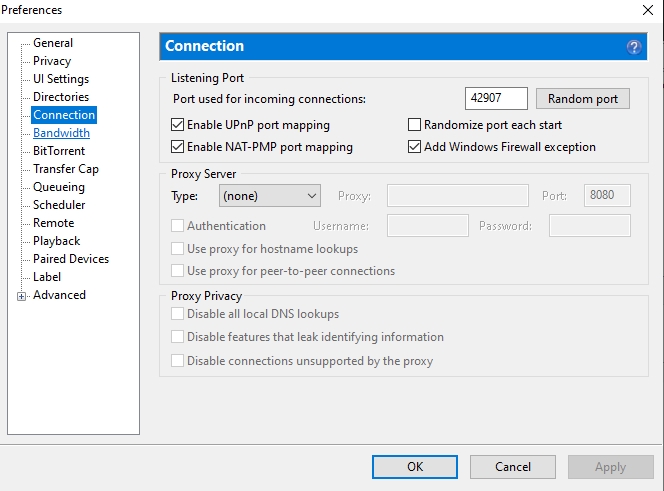
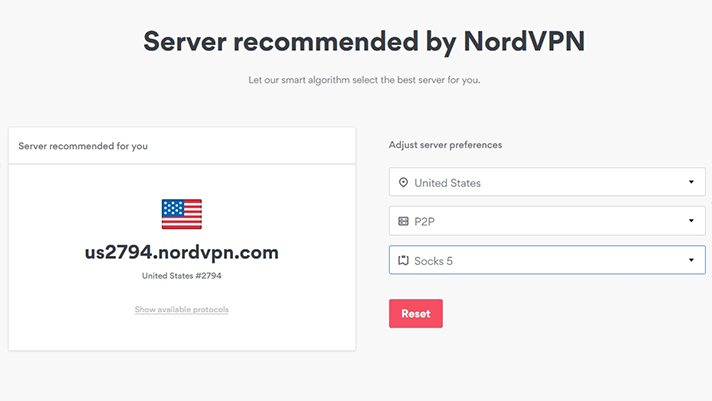
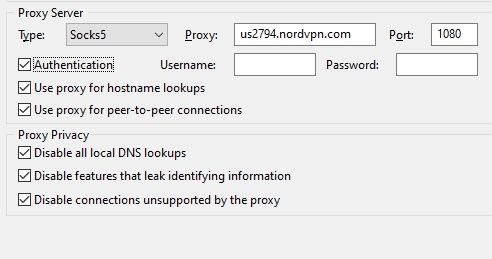

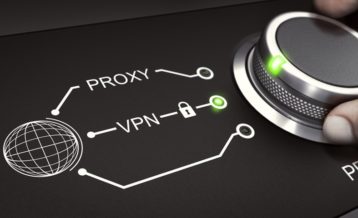

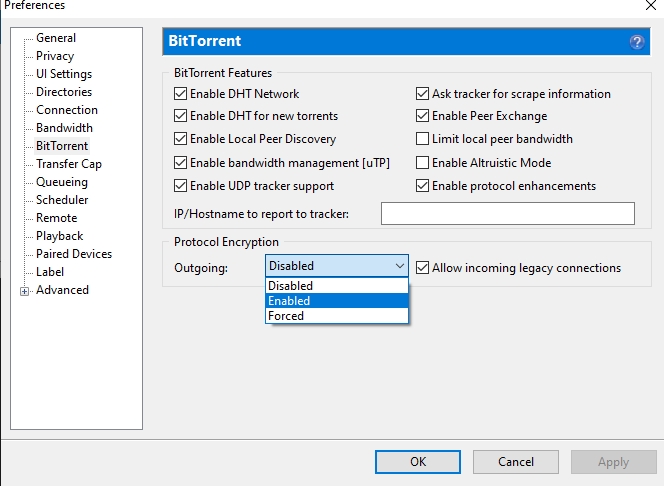

I would really suggest using BitTorrent rather uTorrent, they are known to use you as a proxy and mine bitcoins trough your computer. I would also suggest getting NordVPN too, just to decrease the possibilities of getting f’ed
Hi subparmarine.
Thanks for the comment.
uTorrent and BitTorrent torrent clients are developed by the same company. But you are correct in saying that for some users BitTorrent is probably the better choice.